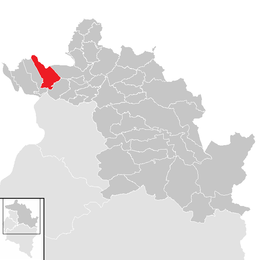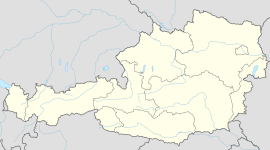world.wikisort.org - Austria
Hard is a town in the west of the westernmost Austrian state of Vorarlberg, directly on the southern shores of Lake Constance. Hard's attractions include the Strandbad and the Grünerdamm. Hard is also known for its skatepark.
This article may be expanded with text translated from the corresponding article in German. (April 2010) Click [show] for important translation instructions.
|
Hard | |
|---|---|
 | |
 Coat of arms | |
 Location in the district | |
 Hard Location within Austria | |
| Coordinates: 47°28′00″N 09°40′00″E | |
| Country | Austria |
| State | Vorarlberg |
| District | Bregenz |
| Government | |
| • Mayor | Eva-Maria Mair (ÖVP) |
| Area | |
| • Total | 17.46 km2 (6.74 sq mi) |
| Elevation | 398−400 m (−914 ft) |
| Population (2018-01-01)[2] | |
| • Total | 13,495 |
| • Density | 770/km2 (2,000/sq mi) |
| Time zone | UTC+1 (CET) |
| • Summer (DST) | UTC+2 (CEST) |
| Postal code | 6971 |
| Area code | 05574 |
| Vehicle registration | B |
| Website | www.hard.at |
An honorary consulate of Brazil is located in Hard.[3]
Population
| Year | Pop. | ±% |
|---|---|---|
| 1869 | 2,305 | — |
| 1880 | 2,085 | −9.5% |
| 1890 | 2,183 | +4.7% |
| 1900 | 2,914 | +33.5% |
| 1910 | 3,637 | +24.8% |
| 1923 | 3,049 | −16.2% |
| 1934 | 3,387 | +11.1% |
| 1939 | 3,488 | +3.0% |
| 1951 | 4,788 | +37.3% |
| 1961 | 6,671 | +39.3% |
| 1971 | 8,887 | +33.2% |
| 1981 | 10,103 | +13.7% |
| 1991 | 10,747 | +6.4% |
| 2001 | 11,471 | +6.7% |
| 2011 | 12,546 | +9.4% |
Geography
Hard has an area of 17.46 km² (6.75 sq mi). Hard is also located between the two rivers Bregenzer Ach and Rhine, and borders on the provincial capital Bregenz.
History
In the 7th century, Alemanni settled near Mittelweiherburg. Near Lake Constance, around the year 1200, large parts of the woods were cleared to build a village: Hard (Old High German for "forest"). The community of Hard was first mentioned in a charter from Pope Innocent IV to the monastery of Mehrerau in 1249.
In 1794, Samuel Vogel from Alsace opened the first Hard textile factory. In 1802, the "Allmenden" (common grounds) were suspended, resulting in private fields, pastures and forests. In 1997, the textile printing museum in Mittelweiherburg was opened.
Harder Schwabenkinder (Swabian children)

From the 17th century to the beginning of the 20th century, many poor Vorarlberg farmers sent their children to Swabia, Southern Germany, to do seasonal work there. These children were called "Schwabenkinder", the undertaking itself was referred to as "Schwabengehen".
Heraldry
The coat of arms of Hard shows two trees and a sailboat. They symbolize important early activities in Hard: logging and fishing.
References
- "Dauersiedlungsraum der Gemeinden Politischen Bezirke und Bundesländer - Gebietsstand 1.1.2018". Statistics Austria. Retrieved 10 March 2019.
- "Einwohnerzahl 1.1.2018 nach Gemeinden mit Status, Gebietsstand 1.1.2018". Statistics Austria. Retrieved 9 March 2019.
- "Foreign representations in Austria". Federal Ministry for European and International Affairs (Austria). Archived from the original on 2011-05-22. Retrieved 2009-01-28.
External links
| Wikimedia Commons has media related to Hard. |
На других языках
[de] Hard
Hard (auch Hard am Bodensee) ist eine Marktgemeinde im österreichischen Bundesland Vorarlberg. Mit 13.793 Einwohnern (Stand 1. Jänner 2022) ist sie nach der Landeshauptstadt Bregenz die zweitgrößte Gemeinde im Bezirk Bregenz.- [en] Hard, Austria
[ru] Хард
Хард (нем. Hard) — коммуна (нем. Gemeinde) в Австрии, в федеральной земле Форарльберг.Другой контент может иметь иную лицензию. Перед использованием материалов сайта WikiSort.org внимательно изучите правила лицензирования конкретных элементов наполнения сайта.
WikiSort.org - проект по пересортировке и дополнению контента Википедии